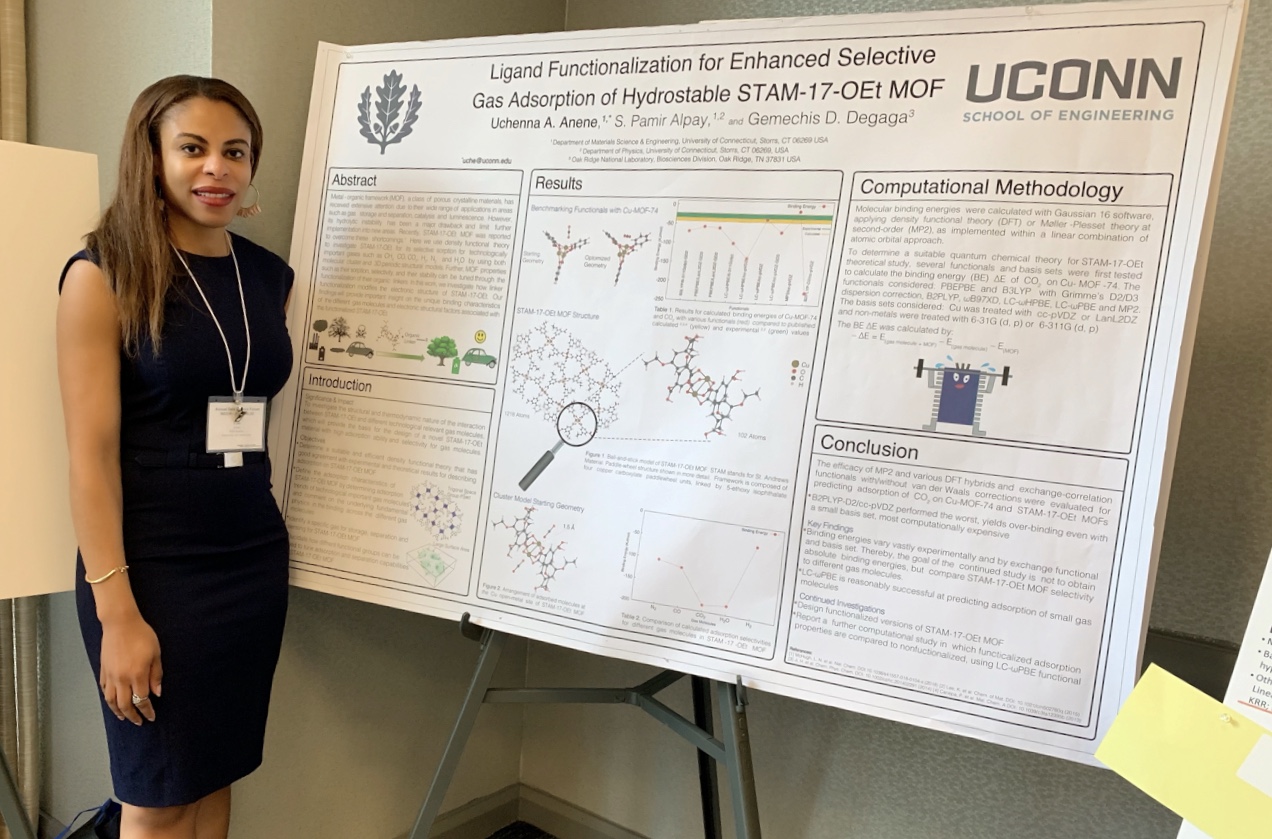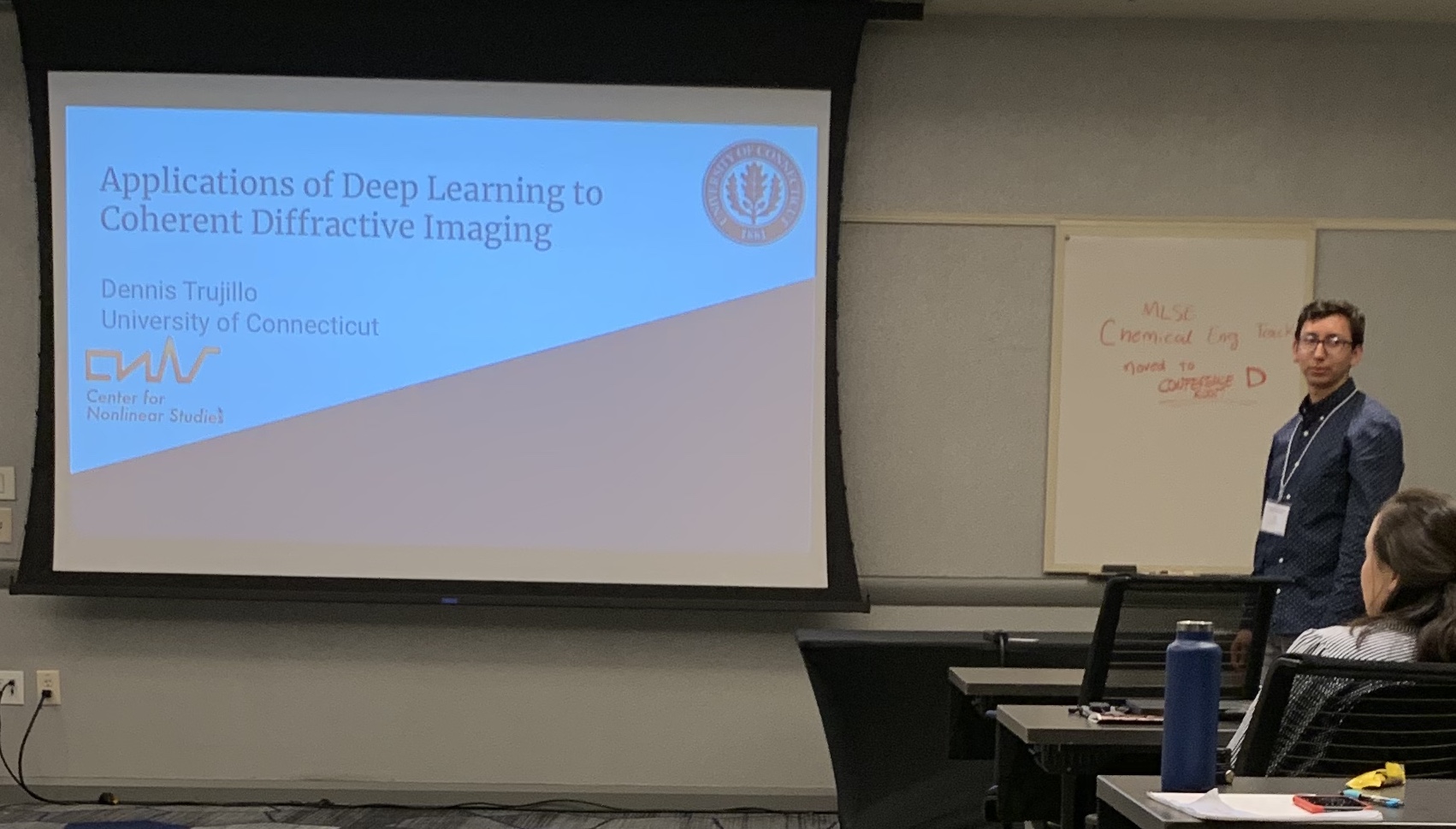Uche Anene presented a poster:
Ligand Functionalization for Enhanced Selective Gas Adsorption of Hydrostable STAM-17-OEt MOF
Abstract. Metal-organic framework (MOF), a class of porous crystalline materials, has received extensive attention due to their wide range of applications in areas such as gas storage and separation, catalysis and luminescence. However, its hydrolytic instability has been a major drawback and limit further implementation into new areas. Recently, STAM-17-OEt MOF was reported to overcome these shortcomings.1 Here we use density functional theory to investigate STAM-17-OEt for its selective sorption for technologically important gases such as CH4, CO, CO2, H2, N2 andH2O by using both molecular cluster and 3D periodic structural models. Further, MOF properties such as their sorption, selectivity, and their stability can be tuned through the functionalization of their organic linkers. In this work, we investigate howlinker functionalization modifies the electronic structure of STAM-17-OEt. Our findings will provide important insight on the unique binding characteristics of the different gas molecules and electronic structural factors associated with the functionalized STAM-17-OEt.
Reference:
1. Mchugh, L. N.; Mcpherson, M. J.; Mccormick, L. J.; Morris, S. A.; Wheatley, P. S.; Teat, S. J.; Mckay, D.; Dawson, D. M.; Sansome, C. E. F.; Ashbrook, S. E.; Stone, C. A.; Smith, M. W.; Morris, R. E. Hydrolytic Stability in Hemilabile Metal–Organic Frameworks. Nature Chemistry. 2018, 10(11), 1096–1102. doi:10.1038/s41557-018-0104-x



